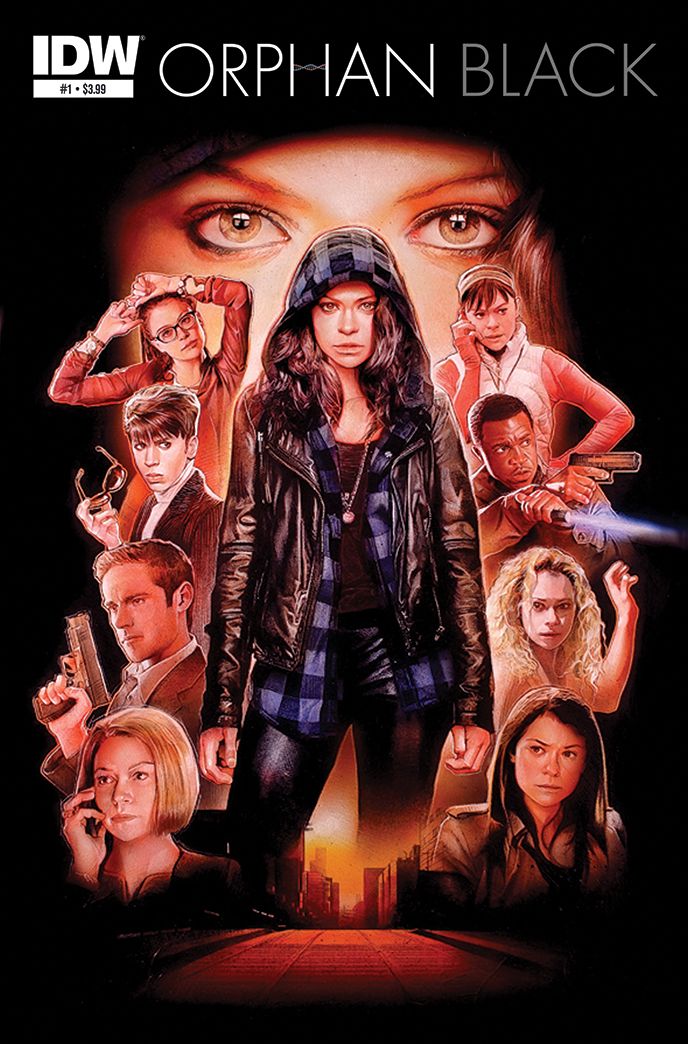Fans of the television series on BBC America may have to wait until April for the start of the new season, but now they can satiate their appetites somewhat with "Orphan Black" #1 from series writers Graeme Manson and John Fawcett, with an assist from Jody Houser and artist Szymon Kudranski. For those not familiar with the show, Sarah Manning was an orphaned child who grew into a career as a con artist and is also one of many clones who occupy several different walks of life. In this issue, Sarah -- unaware that she's a clone -- witnesses the shocking suicide of one of these duplicates, only moments after observing this stranger's uncanny resemblance to her own.
All of that is going to seem oddly familiar to fans of the show because many of the events from the series' very first episode are retold here, often scene-for-scene. It's not an entirely bad approach, at least for those who pick up this comic despite not having seen the series, as the refresher makes both the introductory issue and the premise of the story a lot more accessible. For diehards, though, it's going to seem a lot like watching a rerun, although Houser adds some additional background and new touches that flesh out these already-told events. When Sarah first attempts to impersonate Elizabeth Childs, for instance, what would have been an otherwise pedestrian encounter with one of Elizabeth's neighbors is strangely awkward, adding some dimension to Sarah's far-reaching con game.
Even so, this first issue reads more like a recut of the pilot episode than it does as any kind of true expansion of the franchise and, as such, doesn't really give readers a lot that they don't already get as part of their digital cable package. Ironically, then, this comic will be appreciated most by those coming in with no past knowledge of the franchise; Houser puts forth a nice effort in taking Manson and Fawcett's story, adding her own touches and transforming it into a comprehensible adaptation. She also takes advantage of the format and puts readers into Sarah's head, giving them a more intimate look at her character than the show could do so early on.
A story about clones always needs a skilled artist able to render facial likenesses, and Kudranski comes through. Precise facial renderings by many artists often look stiff or copied, but Kudranski is able to capture the look of actress Tatiana Maslany faithfully across the span of multiple characters without falling into the trap of being unable to differentiate them. His skill doesn't end there, though, as he deftly nails the likenesses of the supporting cast as well. The images of Sarah in various places inside Elizabeth's home, juxtaposed with flashbacks of Elizabeth herself in those same locations, also add a dimension to the story not seen in the series.
If anything, Kudranski focuses a little too much on faces at the expense of the surroundings at times; when the scene moves to present day after the flashback opening, there is no clear indication that Sarah and her ill-fated clone are at a train station until Elizabeth makes her fatal move on the next page. It's really not all that apparent that Sarah and her foster brother Fe are even sitting in a pub later, just as they did in the series. Colorist Mat Lopes shares some of the blame for this ambiguity with dominantly brown background colors that don't clearly identify the environment. Elsewhere, though, Lopes' colors greatly enhance the story, even with simple tricks like different tones for flashback sequences and varying colors in the narration boxes to denote which clone's thoughts are being voiced.
"Orphan Black" #1 is that rare kind of tie-in that probably holds more appeal for those less familiar with a franchise than it does for its loyal followers, but it's nonetheless a worthy if tentative expansion.

